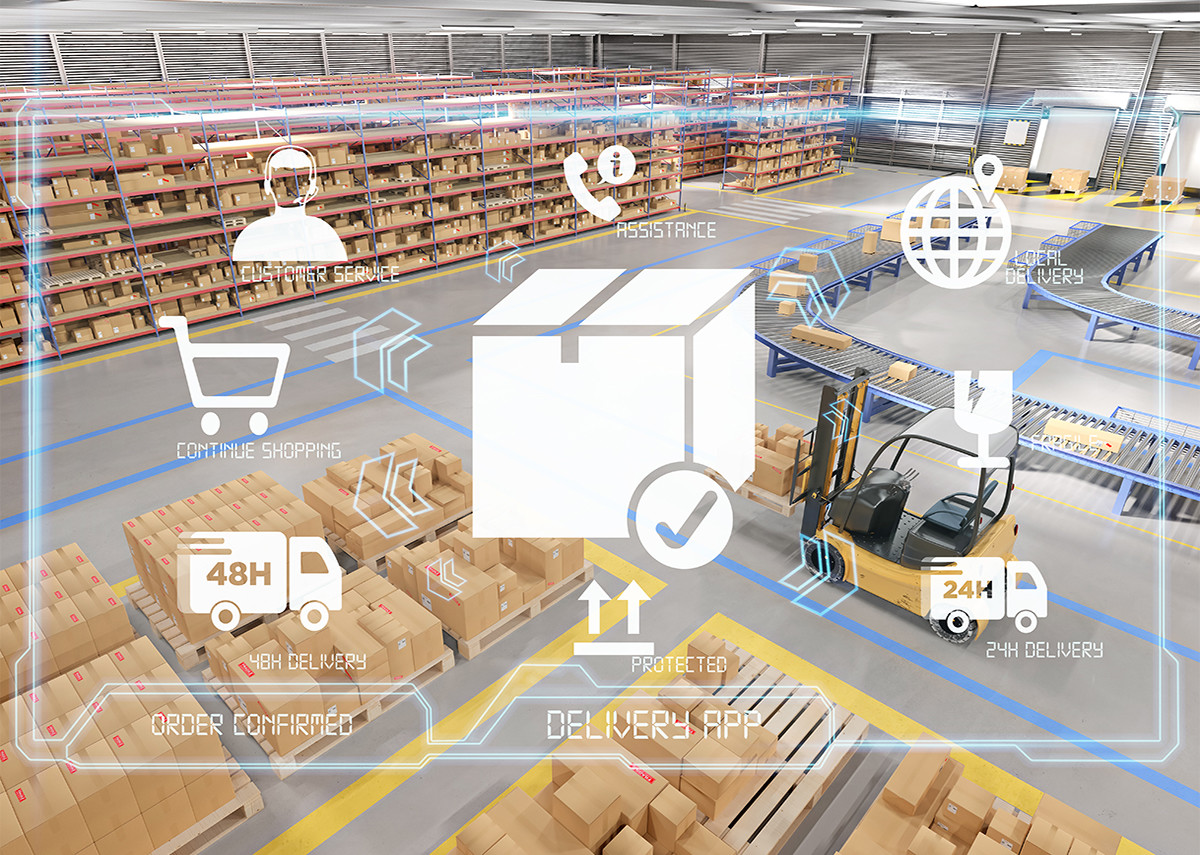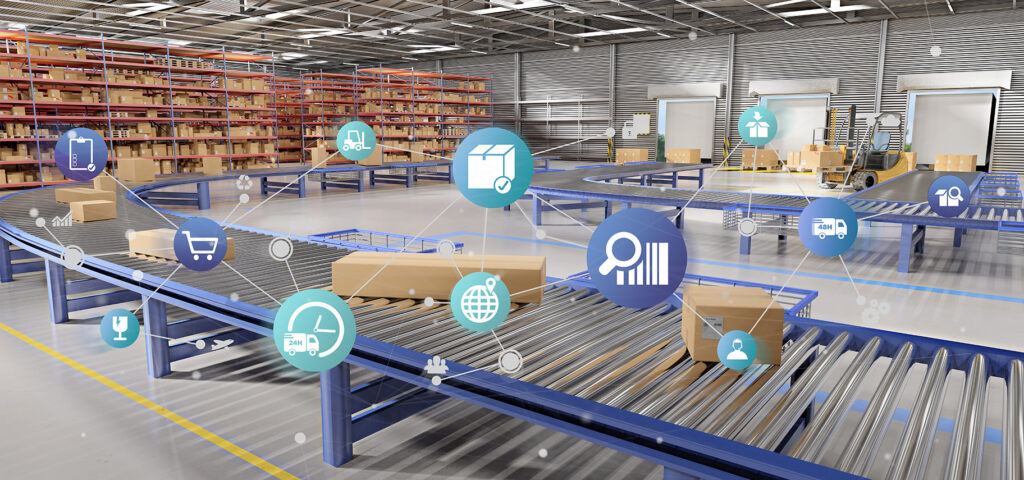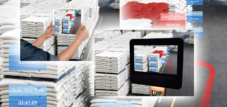The lessons of the crisis: Logistics as a key factor
Language selection 📢
Published on: December 22, 2020 / update from: February 9, 2021 - Author: Konrad Wolfenstein
Challenges for manufacturing companies – seven immediate measures
The COVID-19 pandemic is putting Germany's key industries to the test: How will mechanical engineering, the automotive industry, etc. become more crisis-proof in the future? Many adjustment screws can be located in logistics. Here, automation and digitalization can make a decisive contribution to the stability and resilience of manufacturing companies.
In an already tense global economic situation, a global crisis is occurring that threatens to bring production and supply chains to a standstill: Corona-like scenarios have previously been known from simulated stress tests. The test has been a reality since March and gives manufacturing companies information about their strengths and weaknesses. Since the pandemic is not yet over and similar crises could occur in the future, it is time to develop a catalog of measures to avoid crisis-related production and delivery failures.
Corona shows the need for action in logistics
The corona pandemic is inevitably driving forward digital transformation, especially in the “key industries”, i.e. those industries that are of particularly great economic importance due to their innovative strength, size and interconnections with other sectors of the economy. The focus is on logistics: Although many companies have reduced their production, logistics must maintain supply chains and flows of goods. But while new working models such as home offices and virtual meetings have made their triumphant progress in other areas, the supply chain is still struggling with digitalization. The time is too short to adapt all capacities and stocks to the new challenges. This is all the more serious because consumer behavior has changed, which has been made clear by the temporary sales of numerous goods such as toilet paper, disposable gloves and disinfectants. The wheels of order, planning, production and delivery no longer meshed with each other.
The challenge: adapting to new situations early on
As a result, many companies need to optimize the processes along their supply chains - the supply chain needs to be designed to be more forward-looking and digital. Corona has revealed that digital transformation is still in its early stages, especially among small and medium-sized companies (SMEs). The danger is therefore that the large companies will continue to expand their market shares while the others fall by the wayside. The “big players” have better networks and are more advanced in digitalization. It would be fatal to conclude from this that SMEs inevitably perform worse than corporations in crisis situations. The decisive factor is not the size of the company, but rather time: it is important to be able to adapt to changing circumstances as quickly as possible. For many companies, especially medium-sized companies, this means modernizing, becoming more flexible and thus stabilizing. The focus should be particularly on the digital and logistical infrastructures, which are indispensable for the key industries.
Seven immediate measures
However, this does not mean that companies lack options for action before politicians create the infrastructural requirements for a comprehensive digital transformation. On the contrary, SMEs can and should drive rapid change towards more automated and digitalized operations. In addition, it is important to question and optimize the structure of the company's own logistics. It is worth considering seven possible scenarios.
1. Force warehouse automation
The warehouse has to be closed due to corona infections - what now? Many companies don't have to deal with this scenario at all because their logistics centers are fully automated, which makes them more efficient, flexible and crisis-resistant. Logisticians should therefore use the current situation as an opportunity to gradually increase the level of automation in their warehouses. The long-term goal must be full automation. In Japan, this is already a reality in many places, such as the fashion group Fast Retailing, which wants to equip all of its warehouses worldwide with robots and artificial intelligence and has already implemented this in the greater Tokyo area.
Suitable for:
2. Increase inventories
Before the pandemic, just-in-time was the ideal when it came to delivering goods. The advantage: Through precise delivery to the assembly line, manufacturing companies can minimize their storage costs because no parts have to be stored. However, as soon as deliveries are delayed or completely canceled, as has often happened in recent months, the lack of inventory results in production losses. In order to reduce the risk of production failure in the future, companies should stock more important and frequently used components.
Suitable for:
3. Reshoring or onshoring production
As global supply chains slowly recover, manufacturers are re-evaluating their processes. Many are considering reshoring, i.e. moving parts of production back to their home country. This applies not only to the pharmaceutical industry, but also to mechanical engineering, for example, which has been hit hard by the consequences of the pandemic. In addition, many companies will expand their production capacities in key target markets to avoid outages due to supply chain gaps and to ensure supplies to their customers. In a recent study (McKinsey Global Institute (MGI): Risk, resilience and rebalancing in global value chains), the McKinsey Global Institute (MGI) predicts that up to a quarter of global supply chains could be relocated to other countries within the next five years .
4. Scaling storage capacities
Corona caused a complete overload for some logistics, while demand collapsed completely elsewhere. As a result, some suppliers were left with their goods, while others did not have enough in stock. In order to avoid out-of-stock situations and overcapacity, intelligent IT systems that enable demand forecasting are needed. Many companies are already scaling their storage capacities in this way, but everyone else should use the uncertainties of the last few months as an opportunity to raise their requirements planning to a higher level.
5. Small, decentralized warehouse locations (hubs)
Huge fulfillment centers are out. Instead, the trend is increasingly towards several small satellite distribution centers, so-called hubs or micro hubs, close to customers. The advantages are obvious: a more stable supply chain, greater speed and flexibility in the event of delivery fluctuations. Another interesting aspect is returns handling, which often represents a significant cost item for providers: In a current project by the Mönchengladbach Economic Development Agency (WFMG), the so-called “Fashion Micro Hub”, customers can pick up the clothes they previously ordered online, try them on and return them straight away leave it if you don't like it or like it.
Suitable for:
6. Focus on e-commerce
If you believe a report by Adobe published on Forbes in the summer of 2020 (Forbes: COVID-19 accelerated e-commerce growth '4 to 6 years'), Corona is accelerating the growth of e-commerce by four to six years. The enormous increase in importance of this sector presents logistics with major tasks: storage and distribution centers must be expanded accordingly and geared towards automated individual item picking. Fast and flexible single order management, especially in the form of fully automated split case picking, will become a core competency in intralogistics in many industries in the future.
Suitable for:
- Business digitization – digitization of companies (data and facts as a PDF for download)
- If the goods have to leave the warehouse quickly today
7. Energy efficiency
Anyone who includes this aspect in their planning will notice success in the medium term. It's worth taking a look at the online giant Amazon, which has already equipped 50 of its logistics centers worldwide with solar cells - around five years ago there were zero. But resources can also be saved in other areas, for example by using reusable transport solutions: Replacing disposable packaging with long-lasting and recyclable reusable boxes, which are sometimes in use for ten years, saves huge amounts of packaging waste and disposal costs.
Suitable for:
- CO2 neutrality with photovoltaics – Learn from Amazon Logistics
- DAIFUKU: Green logistics – individual measures not effective
The corona pandemic is forcing us to rethink

7 points and a chance: The corona pandemic is forcing us to rethink – Dusan Petkovic|Shutterstock.com
- Now: Modernization and digitalization of supply chains
- The Corona pandemic and its effects on key industries: What you need to do now
- 7 points and one chance: The corona pandemic is forcing us to rethink
► Contact me or discuss with me on LinkedIn
What will be crucial for the future will be how we secure the infrastructure of our key industries!
Three areas are of particular importance here:
- Digital Intelligence (Digital Transformation, Internet Access, Industry 4.0 and Internet of Things)
- Autonomous power supply (CO2 neutrality, planning security, safety for the environment)
- Intralogistics/logistics (full automation, mobility of goods and people)
Xpert.Digital delivers you here from the Smart AUDA series
- Autonomization of energy supply
- urbanization
- Digital transformation
- Automation of processes
always new information that is updated regularly.































